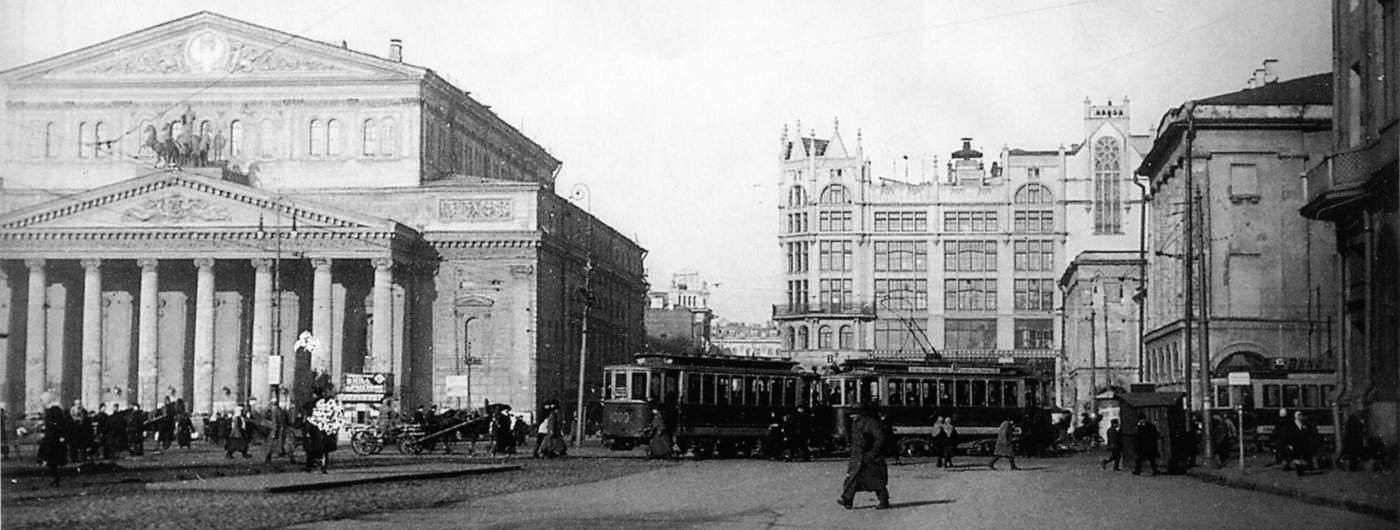The Bolshoi Theatre is one of the biggest theatres in Russia and the most famous theatre in Moscow, which has become a cultural symbol of the city.
In fact, few of the tourists who visited the city were inside the Bolshoi Theatre, but almost everyone saw it from the outside: the view of the Theater Square with the theater building – one of the classic “postcard” views of Moscow.
A brief information about Bolshoi Theatre
The modern building of the Bolshoi Theatre was built in 1853-1856 by the architect Albert Kavos in the style of classicism with an eye on the burnt previous; designed by architects Osip Bove and Andrei Mikhailov. In 2005-2011, the building was reconstructed, preserving the main and side facades.
The main facade of the building with a sloping roof is symmetrical and differs laconic; but rich appearance: the lower tier is decorated with pilasters and rustic, above left and right are bas-reliefs with the image of antique actors and musicians (virtually identical, but differing in small details).
Tthe pediment is decorated with a two-headed eagle surrounded by two griffins.
At the front is a massive eight-column portico, the gable of which is decorated with bas-relief images of muses – patroness of art – with lyre.
The portico is crowned by the famous bronze quadrigar of Apollo (patron of the arts and leader of muses) by Peter Claudet; Also, bas-relief images of muses with lyre can be found in the ornament of a frieze. Behind the colonnade on the facade there are two sculptures of muses (with lyre and tympanum) and 7 bas-relief masks depicting emotions, surrounded by putty mixing styles.
On the sides of the building there are elegant cast-iron galleries with lanterns.
History of the Bolshoi Theatre
Century XVIII
The history of the theatre began in March 1776, when the Moscow provincial prosecutor Peter Urusov; a well-known philanthropist, received permission from Empress Catherine II to organize and maintain “theatrical performances of all kinds, Concerts, voxals and masquerades.”.
A place was chosen for the theatre on Petrovka, so it was called the Bolshoi Petrovsky Theatre.
Unfortunately, the theater burned down before the construction was finished, and Urusov distanced himself from the undertaking, handing over the construction to his companion – the English entrepreneur Michael Maddox (in Russian tradition – Michael Medox).
The Bolshoi Petrovsky Theatre took place on December 30, 1780. In 1794, Maddox had financial difficulties, and the entrepreneur gave the theater to the state: it is transformed into the Moscow Imperial Theatre.
Century IXX
Unfortunately, in 1805 the building of the theater burned down again, and the troupe began to perform at different venues in the home theaters of the Moscow nobility.
In 1806, designed by architect Karl Rossi, a new wooden theatre was built on Arbat Square; but in 1812 it burned down in a city fire, and the troupe began to perform in the house of Apraksins on the Banner (which also occasionally there were fires, but without fatal consequences).
Bolchoi Theatre after Patriot War
In 1816, the Moscow Building Commission, organized to deal with the aftermath of the fire of 1812; announced a competition to build a new theatre building on the former site; the obligatory condition of which was to include in the new building the charred wall of the former Maddox Theatre.
Domenico Gilardi, Pietro di Gottardo Gonzago; Alexey Bakarev and other eminent architects took part in the competition; but none of the submitted projects was accepted.
After the re-competition, the project of Professor Andrei Mikhailov of the Imperial Academy of Arts was chosen, however; it was considered too expensive and too large- and the project was commissioned to be reworked by architect Osip Bova.
Beauvais preserved the basics of Mikhailov’s composition, but changed the proportions, reducing the size of the building, and made adjustments to the finish.
The Triumph of the Muses
The Imperial Bolshoi Theatre opened on January 18, 1825 with a performance of “The Triumph of the Muses”, the plot of which in an allegorical form conveys the history of the theater and tells how the Genius of Russia combined with the muses and created a new one from the ruins of the burned theater.
Unfortunately, in 1853 the theater burned down again. The fire lasted for several days and destroyed everything except the outer walls and portico. Albert Kavos, the chief architect of the Imperial Theatres, won the announced competition to restore the building. The new building of the theater mainly retained the volume and layout of the old, but its height was increased, and the architectural design is completely redesigned.
Century XX
After the 1917 Revolution, the Bolshoi Theatre became known as an academic theatre. Initially, he was threatened with closure, but eventually the theater was preserved and the dilapidated building fortified; imperial symbols on the facade were replaced by the Soviet one. In 1976-1991 it was named the State Twice Order of Lenin academic Bolshoi Theatre of the USSR.
In 2005, the theater was closed for renovation, which was supposed to be completed in 2008, but lasted until 2011. Reconstruction of the building was ambiguously accepted by the public: in the end, only 3 supporting walls (main and side facades) remained from it, everything else was completely rebuilt. However, during the reconstruction the main facade of the Bolshoi Theatre was qualitatively restored, and the Soviet coat of arms was replaced by a historical double-headed eagle.
Today, the theater is called the State Academic Bolshoi Theatre of Russia (GABT), but much more often it is called simply the Bolshoi Theatre.
Good news if you wish visit the Bolchoi Theatre, we have the tickets service to make sure that you will enjoy the stay.












